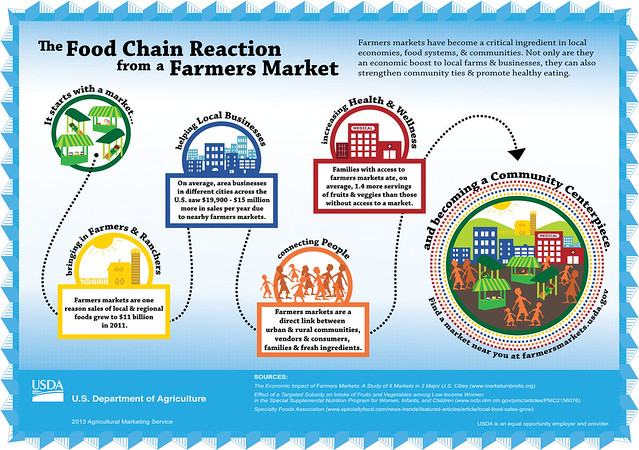
Farmers markets have become a critical ingredient to our nation’s economy, food systems, and communities. Connecting rural to urban, farmer to consumer, and fresh ingredients to our diets, farmers markets are becoming economic and community centerpieces in cities and towns across the U.S.
Over the weekend, I had the opportunity to kick off National Farmers Market Week at a wonderfully diverse and thriving market—the Columbia Heights Community Marketplace in Washington, DC. Columbia Heights represents what I envision many farmers markets are like– a market with a deep sense of community that provides local residents with access to fresh, locally produced fruit, vegetables, meats, baked goods, and much more. It’s also a place where neighbor meets neighbor, and the many benefits of having a farmers market nearby are felt throughout the community.
When food is produced, processed, distributed and sold all within the same region, more money stays in the local economy. This leads to economic development and job creation. Farmers markets provide opportunities for small farmers and businesses to sell their products, and they help meet the growing demand for locally produced food. Being able to quickly and directly market to the consumer gives farmers important income opportunities without the added costs of shipping, storage and inventory control.
Another growing feature for markets across that nation is the acceptance of Supplemental Nutrition Assistance Program (SNAP) and Women, Infants and Children (WIC) benefits. By accepting SNAP benefits, farmers markets are providing access to a wide variety of fresh, healthy products. In fact, in 2012 over $16 million in SNAP redemptions were made at farmers markets across the country!
Beyond the economic and business benefits, farmers markets give communities across the country access to fresh, healthy foods, especially in urban and rural areas where shopping options may be limited. What began as a business necessity for many small farmers has evolved into a social event for entire communities, with many families and patrons viewing a trip to the Saturday morning market as the start of their social weekend. As markets grow, new features like live music, cooking demonstrations, gardening tips and educational opportunities are added. Businesses that surround farmers markets also benefit from the additional foot traffic that the market brings.
As of today, there are over 8,000 markets listed in our National Farmers Market Directory, demonstrating the continued demand for these community-oriented markets and the many contributions they make to their local economies. I hope you’ll join us in celebrating them all during National Farmers Market Week.
Visit and support your local farmers market or find a new one to visit. Try new foods and enjoy the wonderful, fresh produce offered. Watch as your children learn more about the food they eat and where it comes from. And reconnect with your local farmers, vendors, neighbors and community.
